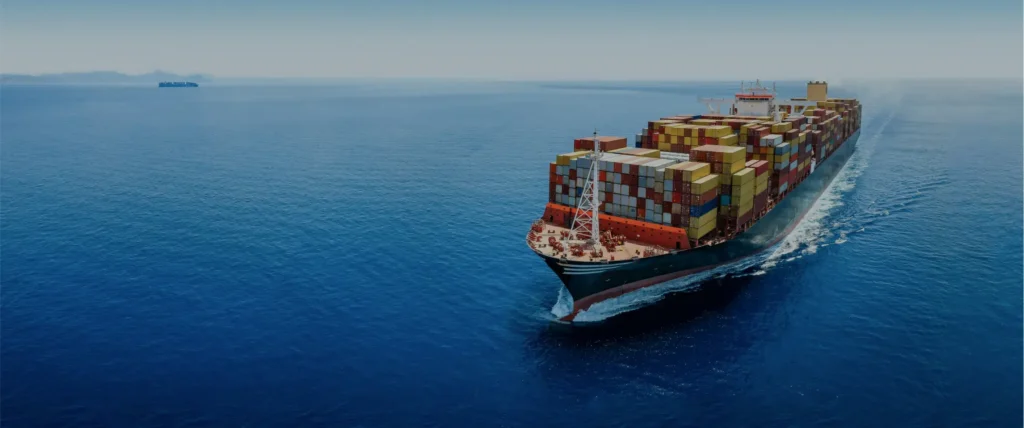Shipping textiles from China to the UK requires balancing speed, cost, and customs compliance. As global demand for garments and fabrics grows, importers face tight delivery schedules and complex logistics. This guide explains how to ship textiles from China to UK efficiently—covering shipping options, costs, transit times, documentation, and real case examples.
What Are the Main Methods to Ship Textiles from China to UK?
When deciding how to ship textiles from China to UK, businesses can choose between air freight, sea freight, and rail freight. Each has different advantages, costs, and timelines.
| Shipping Method | Transit Time | Average Cost (per kg) | Best For | Pros | Cons |
|---|---|---|---|---|---|
| Air Freight | 5–9 days | $6–$10 | Urgent textile shipments | Fast delivery | Expensive for bulk fabrics |
| Sea Freight (FCL/LCL) | 30–40 days | $0.8–$2 | Large textile orders | Cost-effective | Long lead time |
| Rail Freight | 18–22 days | $2–$4 | Mid-sized textile shipments | Balanced speed/cost | Limited port coverage |
In summary, air freight suits fashion brands with short deadlines, while sea freight is ideal for large-volume textile importers. Rail freight provides a solid middle ground for balanced speed and cost.
How Much Does It Cost to Ship Textiles from China to UK?
The total cost of shipping textiles depends on weight, volume, incoterms, and route. Below is an estimated cost breakdown for different modes:
| Mode | 100 kg Sample | 1 CBM Cargo | 20-ft Container | 40-ft Container |
|---|---|---|---|---|
| Air Freight | $900 | N/A | N/A | N/A |
| Rail Freight | $300 | $800 | $3,000 | $4,800 |
| Sea Freight | $150 | $500 | $2,200 | $3,600 |
Additionally, importers should factor in customs duties, VAT (20%), insurance, and handling fees. For example, shipping by sea with FCL often includes port fees, terminal handling, and delivery charges to a UK warehouse.
What Documents Are Required for Textile Shipping?
Shipping textiles across borders demands accurate documentation to ensure smooth customs clearance.
| Document | Purpose | Issued By |
|---|---|---|
| Commercial Invoice | Lists product value and buyer-seller details | Exporter |
| Packing List | Describes textile types and quantities | Exporter |
| Bill of Lading / Air Waybill | Transport document | Carrier |
| Certificate of Origin | Identifies product origin for tariff purposes | Chamber of Commerce |
| Import Declaration (UK) | Required for customs clearance | Importer |
| Textile Compliance Certificates | Verifies fiber content and labeling | Supplier/Testing lab |
Having these documents ready helps prevent delays and ensures compliance with UK’s textile import standards.
How Long Does It Take to Ship Textiles from China to UK?
Transit times vary depending on shipping mode and route.
| Origin | Destination | Mode | Transit Time |
|---|---|---|---|
| Shenzhen | London | Air | 6–8 days |
| Guangzhou | Felixstowe | Sea (FCL) | 35–40 days |
| Chengdu | Birmingham | Rail | 19–21 days |
Moreover, customs clearance typically adds 1–3 days, depending on inspection requirements and documentation accuracy.
Case Studies: Real Textile Shipments from China to UK
Case 1: Air Freight for Fashion Brand
Origin: Shanghai
Destination: London Heathrow
Cargo: 800 kg of silk fabric (for luxury garments)
Mode: Air Freight
Cost: $6,400
Transit Time: 7 days
Outcome: Delivered in time for seasonal collection launch.
Case 2: Sea Freight for Retail Chain
Origin: Ningbo Port
Destination: Felixstowe Port
Cargo: 40-ft container of cotton textiles (22,000 kg)
Mode: Sea Freight
Cost: $3,500
Transit Time: 38 days
Outcome: Efficient for high-volume, low-cost fabric imports.
What Are the Customs Duties and Taxes on Textile Imports to the UK?
Textile imports from China to the UK are subject to customs duty and VAT.
| Type | Rate | Applied To |
|---|---|---|
| Customs Duty | 5–12% | Declared CIF value |
| VAT | 20% | CIF + Duty value |
| Inspection Fee | Variable | Textile compliance |
To minimize costs, importers can register for EORI (Economic Operator Registration and Identification) and apply for postponed VAT accounting.
Need a reliable logistics partner? Share your shipment details and we’ll provide a tailored quotation quickly and accurately.
How to Ensure Compliance with UK Textile Standards?
The UK enforces strict textile labeling and safety standards. Importers must ensure compliance with:
- Fiber Composition Regulation (EU 1007/2011)
- Textile Labelling Standards (BS EN 14682)
- Flammability and safety testing
Additionally, each product label should display fiber content, care instructions, and country of origin. Failure to comply can lead to confiscation or fines.
Should You Choose FCL or LCL for Textile Shipping?
| Type | Ideal For | Advantages | Disadvantages |
|---|---|---|---|
| FCL (Full Container Load) | High-volume importers | Lower cost per unit, better protection | Requires full container |
| LCL (Less than Container Load) | Small textile businesses | Flexible, lower entry cost | Higher per-unit cost, shared space |
For example, if you regularly import bulk rolls of fabric, FCL is more economical. On the other hand, LCL suits seasonal or small-batch orders.

What Are the Key Trends in Textile Logistics for 2025?
As supply chains modernize, textile shipping continues to evolve:
- Sustainable packaging and lower carbon shipping via rail and sea
- Digitized customs clearance and online tracking
- Smart warehousing and integrated logistics systems
- Flexible Incoterms to support e-commerce importers
Without a doubt, leveraging these trends can make your textile supply chain faster, greener, and more transparent.
Conclusion
To summarize, knowing how to ship textiles from China to UK helps importers cut costs, improve timelines, and ensure compliance. Air freight suits urgent deliveries, sea freight remains cost-effective for bulk fabrics, and rail freight balances both. By preparing proper documentation, choosing the right incoterms, and partnering with a reliable logistics provider, your textile shipments will arrive smoothly and efficiently.
Request a Quote
Need a tailored solution for your shipping from China?Let TJ China Freight Forwarder assist you with reliable, cost-effective service.
FAQ:
Q1.How can I reduce textile shipping costs from China to the UK?
Consolidate fabric shipments, choose sea or rail freight, and negotiate with freight forwarders for better rates.
Q2.What are the best incoterms for textile imports from China?
FOB and CIF are most common—FOB gives importers more control, while CIF includes shipping and insurance.
Q3.How long does customs clearance take for textile imports in the UK?
Typically 1–3 working days if all textile documentation and labeling requirements are met.
Q4.Can I track my textile shipment from China to the UK in real-time?
Yes, most freight forwarders provide digital tracking for air, sea, and rail shipments.
Q5.What’s the minimum shipment size for textile sea freight?
Usually 1 CBM for LCL shipments, but some carriers accept smaller textile consignments.




